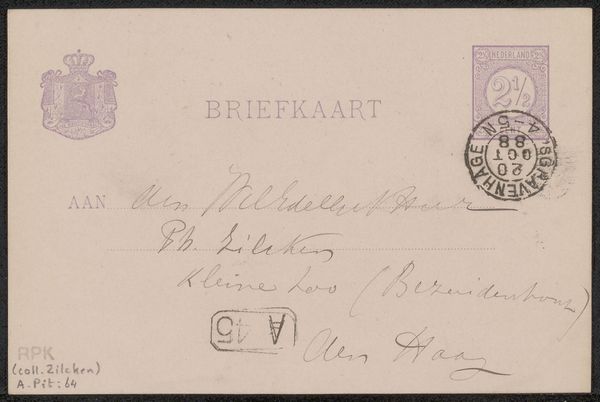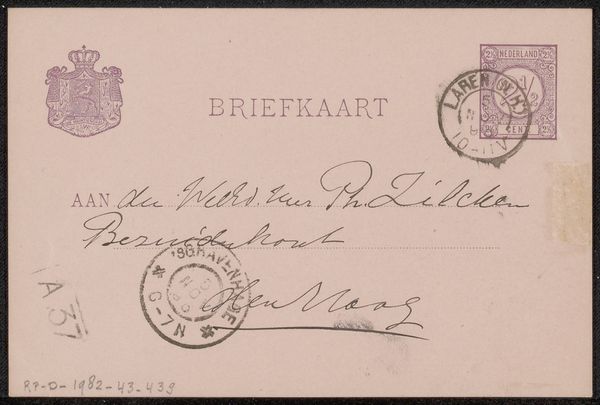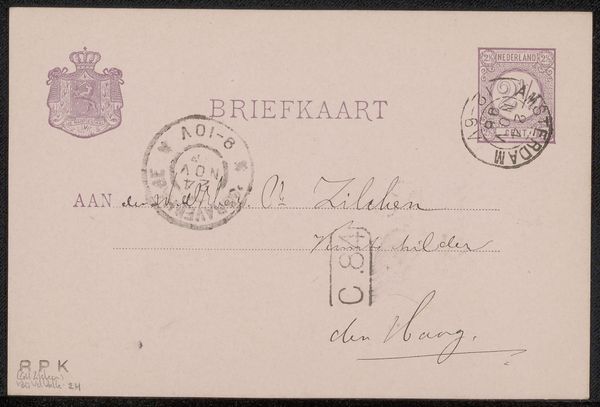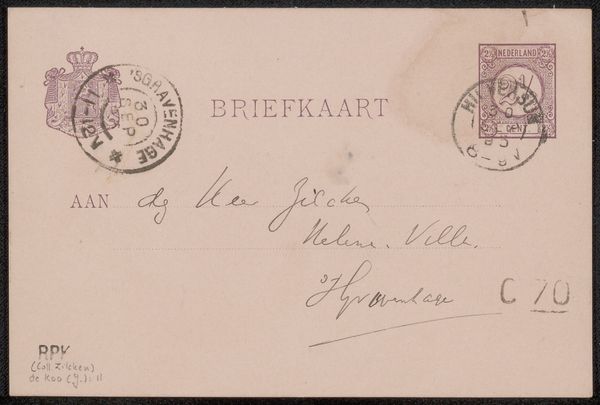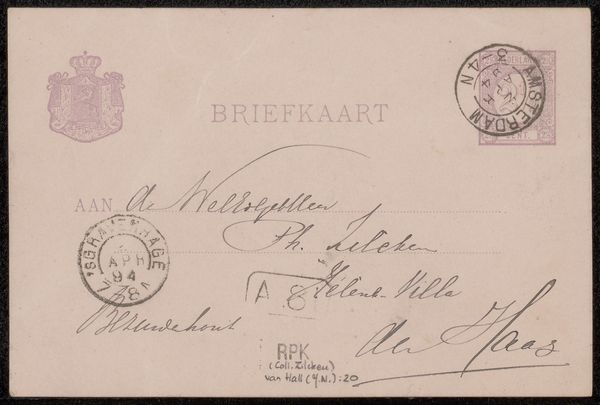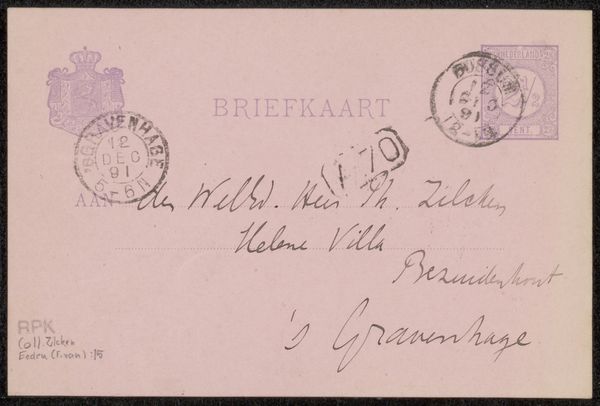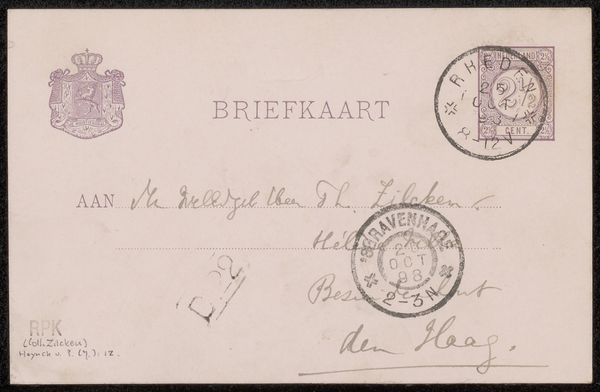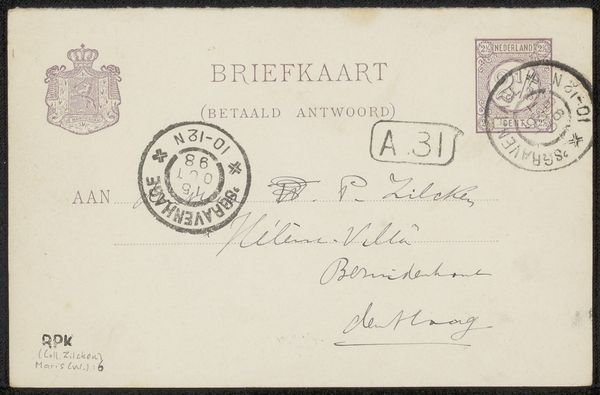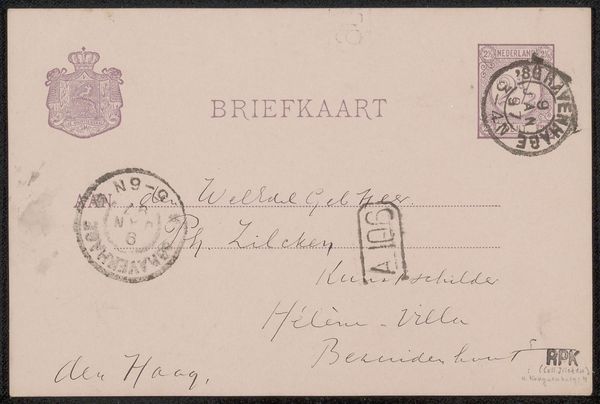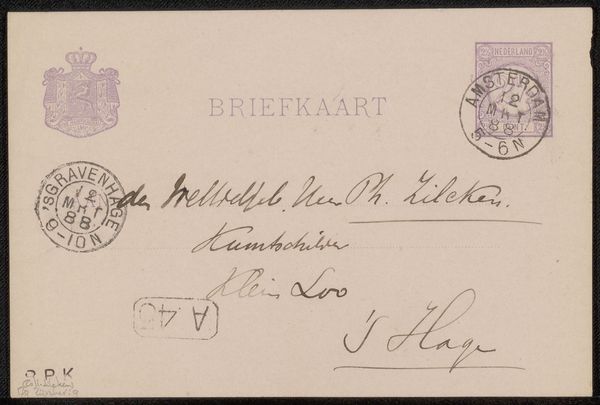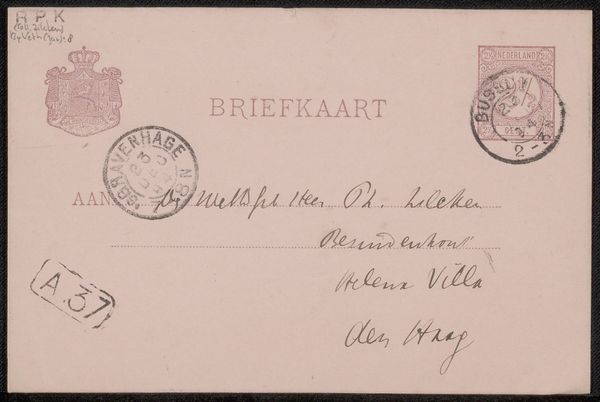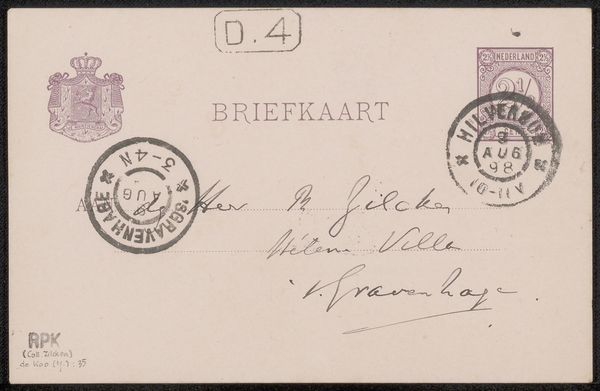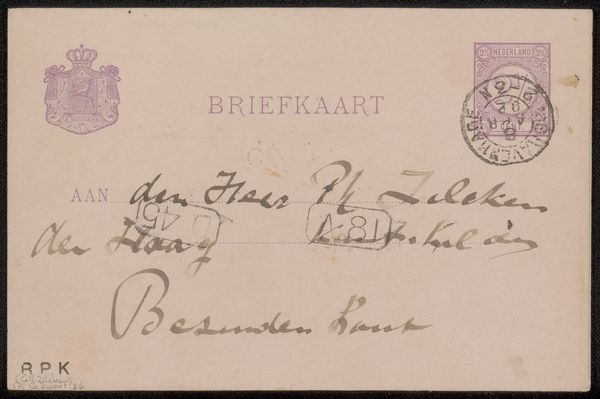
drawing, paper, ink
#
drawing
#
paper
#
ink
#
calligraphy
Copyright: Rijks Museum: Open Domain
Editor: Here we have "Briefkaart aan Philip Zilcken," a drawing in ink on paper by Jan Veth, likely from between 1895 and 1899. It’s a delicate work—essentially, the back of a postcard. I’m curious, what significance might a seemingly mundane object like this hold? Curator: I see this postcard as more than just a means of communication; it's a trace of social and artistic networks at the turn of the century. Consider Veth’s likely relationship to Zilcken. Correspondence reveals affinities, professional connections, and the very pulse of the art world beyond the grand canvases we often focus on. Editor: So, it’s the intimacy and accessibility of the postcard that make it interesting? Curator: Precisely. Who has access to the written word? To literacy? The price of postage. These objects weren’t neutral carriers of messages, they participated in broader discussions on citizenship, access, and participation. Even the very act of handwriting – what does it tell us about individual expression versus standardized forms of communication? Editor: That’s a lot to unpack from one little card. It makes me wonder about who gets remembered and whose stories get lost in the grand narratives of art history. Curator: Indeed. And doesn't the handwriting style, the choice of words, perhaps even the specific stamp, hint at subtle class markers, power dynamics, and personal histories often erased in official accounts? How can we use such ephemera to reconstruct marginalized narratives and give voice to forgotten actors within the art world? Editor: Thinking about this in terms of social power structures and untold stories is a completely new way to consider what might otherwise be considered an ordinary postal message! Thanks! Curator: My pleasure. Remember to question whose voices are amplified and whose are silenced, and art history comes alive in new and vital ways.
Comments
No comments
Be the first to comment and join the conversation on the ultimate creative platform.
